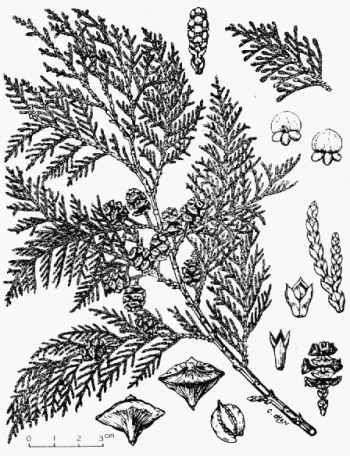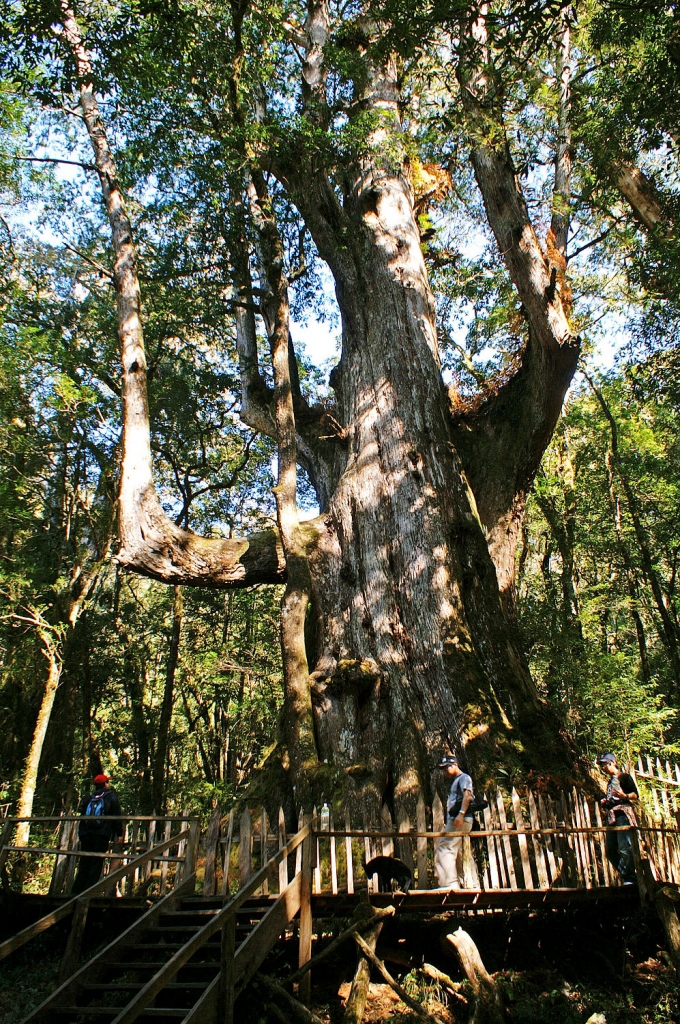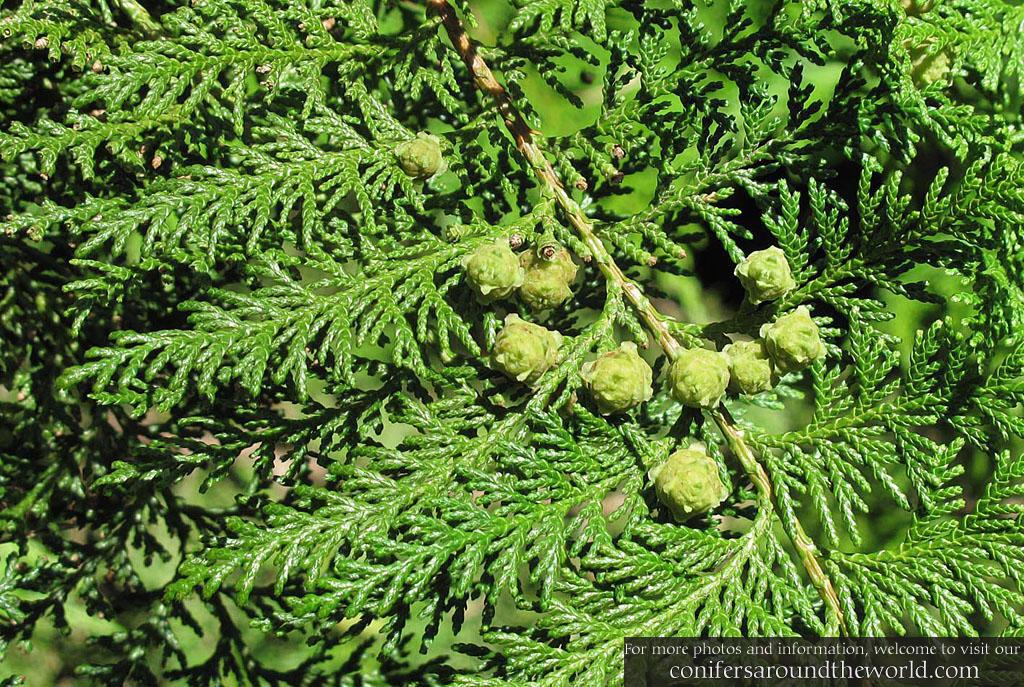
Chamaecyparis formosensis, as described in 1901 by Ninzo Matsumura in 1901, in Botanical Magazine, Tokyo, vol. 15, is commonly known as Formosan or Taiwan red cypress; as well as "hong kuai " 紅檜 (red cypress) and 薄皮 (thin skin) in the Chinese language. The species name recognizes the island of Taiwan, formerly known as Formosa, where this conifer is endemic.
Description. Taiwan red cypress is a slow-growing, but long-lived and ultimately large to very large coniferous tree growing to 175 to 200 feet (55 - 60 m) tall with a trunk up to 22 feet (7 m) in diameter.
It is most closely related to the Japanese species, Chamaecyparis pisifera (sawara cypress), which differs in smaller globose cones which are 0.12 to 0.33 inch (4-8 mm) long with 6 to 10 scales.
Distribution. This species it native to Taiwan, where it grows in the central mountains at moderate to high altitudes of 3,200 to 9,200 feet (1,000 - 2,900 m) of elevation. It is threatened by habitat loss and over-cutting for its valuable timber.

